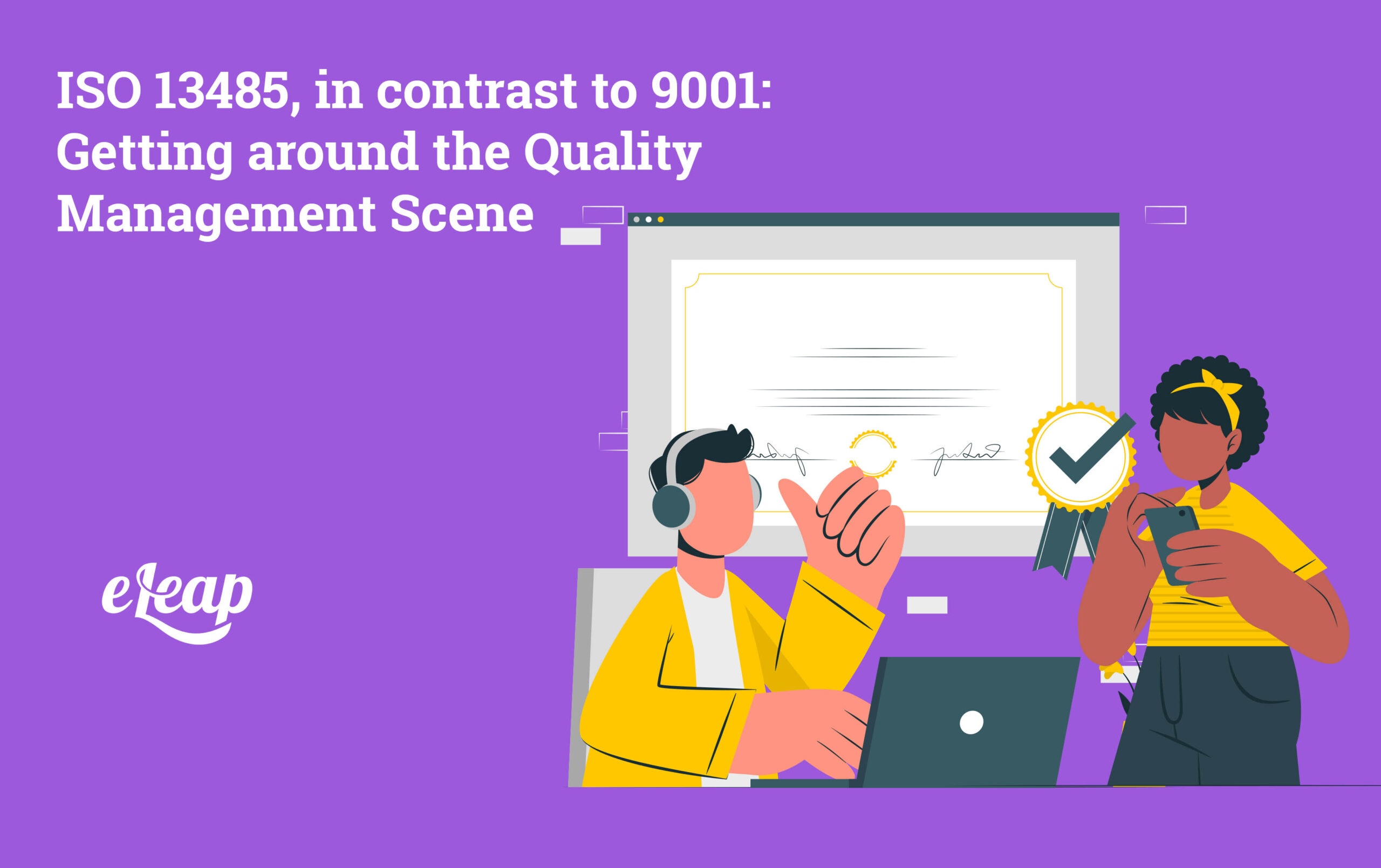ISO 13485, in contrast to 9001: Getting around the Quality Management Scene

In the vigorous field of quality management ISO 13485 VS 9001, firms frequently work hard to decide between ISO 9001 and ISO 13485. Both of these are globally acknowledged standards, but they serve different markets and have distinct purposes.
Overview Of ISO 13485 VS 9001
Systems for managing quality are essential for guaranteeing the efficacy and efficiency of corporate operations. ISO 9001 and ISO 13485 are two well-known standards essential to leading organizations to excellence. Let’s examine these standards’ subtleties and determine their applicability in various situations.
Outline of ISO 13485
Organizations engaged in the growth, manufacture, and supply of medical equipment are the target audience for ISO 13485. To assure these devices’ efficiency and safety throughout their lives, the standard agrees on specific standards. It turns out to be a standard for the healthcare sector’s regulatory agreement.
Overview of ISO 9001
ISO 9001 is a more industry-wide standard that is more general. Its main aim is to create an all-encompassing quality management system that recovers corporate processes as a whole. The objectives of ISO 9001 are to increase customer satisfaction and inspire ongoing business development.
Why is ISO 13485 used?
The ambition of ISO 13485 is to address the particular difficulties met by the medical device sector. It promises that businesses in this trade follow strict quality and safety values, fulfill legal obligations, and gain a competitive advantage in the marketplace.
The objective of ISO 9001
ISO 9001 aims to modernize practices and procedures in various trades. Establishing a culture that prioritizes customer satisfaction and repeated development can help organizations attain operational excellence and establish trust with their customers.
Variations in the Scope

The scope of the two standards is one of their primary differences. ISO 9001 delivers a more comprehensive outline that may be practical for manufacturing, facilities, and other industries, whereas ISO 13485 is specifically intended for the medical device trade.
Documentation Needs
ISO 13485 needs careful documentation since medical equipment is vigorous. ISO 9001 on the other hand, licenses greater flexibility and specifies that documentation must be in line with an organization’s sole requirements and areas.
Managing Risks in ISO 13485
According to ISO 13485, risk management is crucial to guaranteeing the effectiveness and safety of medical devices. To confirm the quality of their goods, organizations need to use a risk-based strategy, knowing and reducing potential hazards.
Risk Control in ISO 9001
Although it recognizes the value of risk management, ISO 9001 offers a broad framework. It promotes the adoption of risk management procedures by organizations while allowing for flexibility according to the situation and industry.
Procedure for Certification
The procedure of ISO 13485 certification involves a comprehensive valuation of the organization’s compliance with positive regulations connected to medical devices. More adaptable, ISO 9001 evaluates an organization’s general devotion to quality management ideas.
ISO 13485 Certification Advantages
The ISO 13485 guarantee is a requirement for businesses in the medical device industry to obey regulations and gain market recognition. It gives investors trust by proving a devotion to quality and safety.
Benefits of Certification in ISO 9001
The benefits of ISO 9001 certification are not restricted to a single industry. Organizations can advance customer happiness by rationalizing operations, streamlining performance, and nurturing a continuous improvement philosophy by putting this guideline into repetition.
Problems in Applying ISO 13485
Strict regulatory obedience and the resource-intensive nature of certification are two problems with implementing ISO 13485. For an organization to return to certification, several problems must be overcome.
Applying ISO 9001 Presents Problems
Parallel to this, organizations may initially resist implementing ISO 9001. As they strike an equilibrium between the obligation for standardization and the elasticity needed to fulfill the outlooks of a range of industries.
Which sectors achieve the most from certification to ISO ISO 13485 VS 9001?
The medical device segment is the target market for ISO 13485, which promises adherence to strict quality and security standards.
What part does ISO 9001 play in enduring development?
The ISO 9001 standard endorses a continuous improvement culture by emphasizing the value of frequent evaluations, response loops, and remedial measures.
What problems might businesses run into while putting ISO 9001 into practice?
During the ISO 9001 application, obstacles may include early opposition to alteration and striking the correct balance between standardization and elasticity.
Is ISO 13485 certification obligatory for all manufacturers of medical devices?
While it is not mandatory, ISO 13485 certification displays the medical device industry’s commitment to severe quality standards, which increases its status and market acceptance.
Conclusion
In summary, the industry, organizational purposes, and particular necessities all play a role in either ISO 13485 or ISO 9001 being designated. While ISO 13485 promises safety and agreement in the medical device industry, ISO 9001 offers a flexible approach suitable for various businesses.